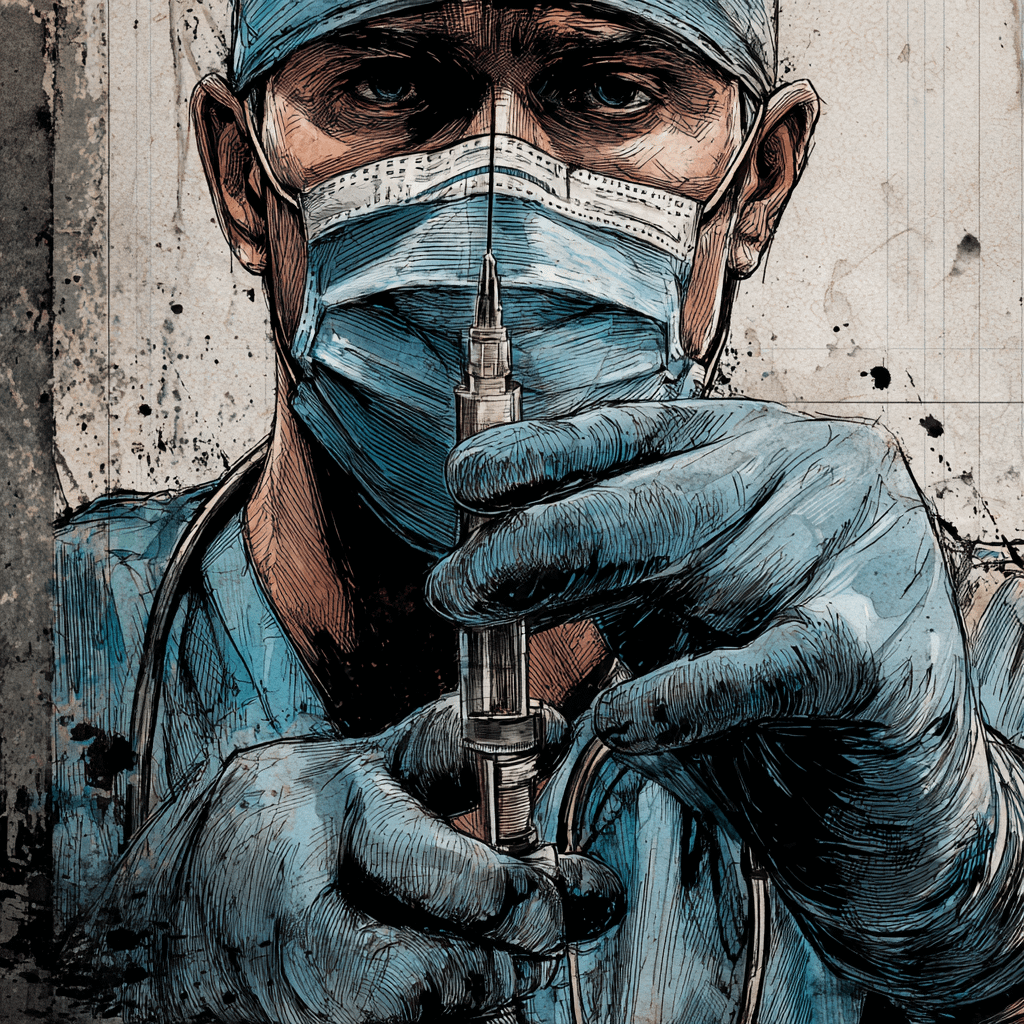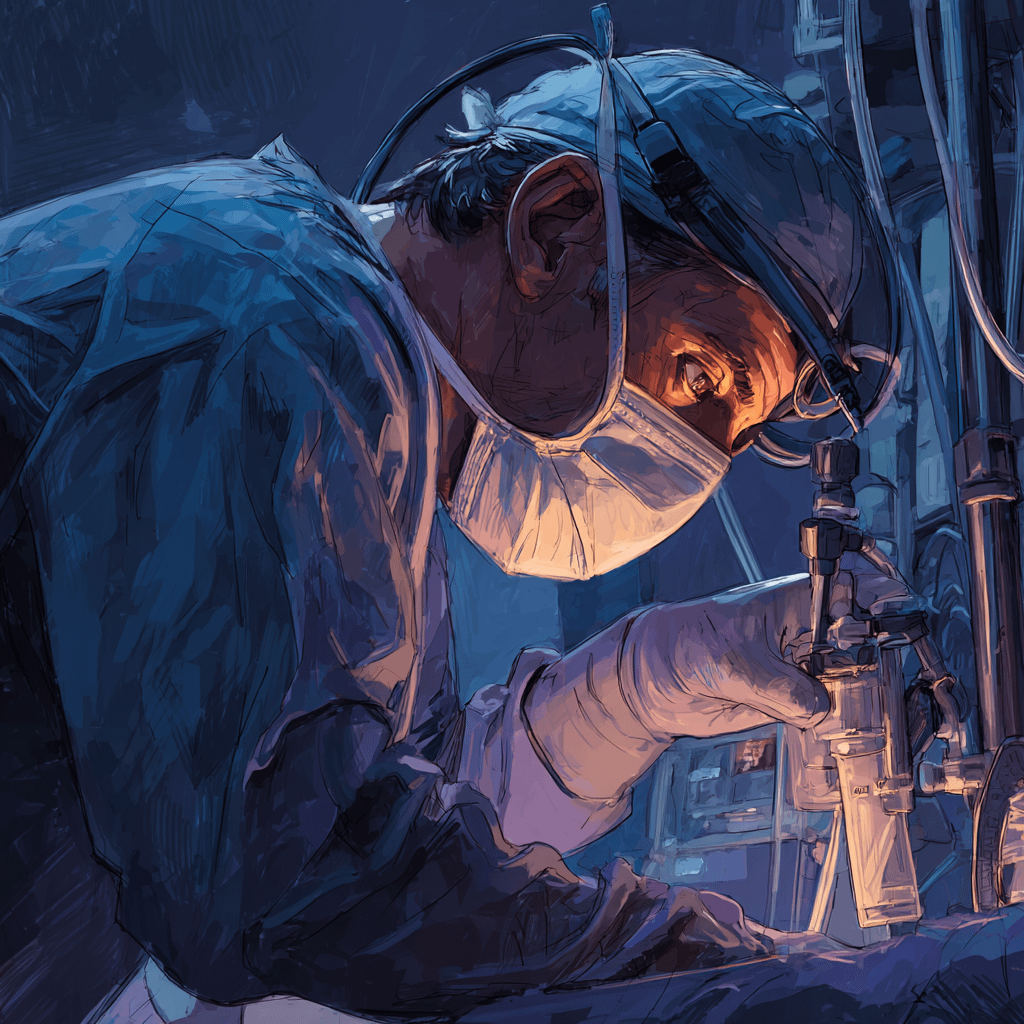What Is Anesthesiology?
Ask a surgeon and they’ll say it’s “just pushing propofol and scrolling through memes while reclining like Cleopatra in Crocs.” Cute.
Meanwhile, reality?
It’s babysitting unstable physiology with one eye on the monitor and the other on the surgeon’s ego, all while the patient flirts with oblivion.
Every beep is a passive-aggressive cry for help. Every drop in blood pressure? A surprise quiz in advanced cardiovascular gymnastics. And that capnograph? Yeah, we sweet-talk it like it’s our manipulative ex.
And when things go sideways?
We don’t scream.
We don’t flinch.
We adjust settings like seasoned diplomats handling nuclear codes. While the rest of the room panics about suction, we’re calmly coaxing a pulse back to life like it’s a diva demanding the right lighting.
Table of Contents

What Is Anesthesiology?
Anesthesiology is the delicate sport of keeping people barely alive while pretending you’re relaxed. It’s monitoring every twitch, every passive-aggressive beep, and every sudden change in tone from a monitor that sounds like it’s about to file for a restraining order.
What is anesthesiology, really?
It’s talking to the capnograph like it’s your emotionally unstable ex—soothing, manipulative, and always one waveform away from total collapse.
And when the surgical field becomes a scene from a war movie?
We don’t panic.
We adjust. We whisper to machines. We give vasopressors like love letters written in norepinephrine. We control life and death with a poker face and borderline homicidal calm.
So the next time someone asks what is anesthesiology, tell them this:
It’s the fine art of doing everything while looking like you’re doing nothing.
And no, we’re not just checking the Wi-Fi.
We are the damn connection.
What Is Anesthesiology – Part 2
Apparently, what is anesthesiology boils down to sitting in the shadows, scrolling TikTok, while the surgeons “save lives.” Adorable theory. Shame it’s fiction.
What it actually is?
It’s noticing the blood pressure nosedive while everyone else argues about retractors. It’s realizing the patient just ghosted their own pulse—and being the only one who noticed.
We’re not ambient noise.
We’re the violin string that snaps two seconds before the entire surgical symphony implodes.
That subtle “uh-oh” in the surgeon’s voice?
We’ve already sweet-talked the FiO₂, bullied three IVs into cooperating, and locked eyes with the capnograph like we’ve been divorced twice and know exactly how this ends.
While the rest of the OR thinks we’re mastering Candy Crush, we’re out here playing psychic dodgeball with disaster—armed with caffeine, sarcasm, and a touch of medical-grade PTSD.
So what is anesthesiology?
It’s gaslighting ventilators into obedience.
It’s outwitting rogue tourniquets.
It’s praying today’s the day the surgeon doesn’t decide to improvise like it’s jazz night.
All while maintaining just enough emotional stability to keep the med student from crying.

The Machines Whisper Back
So, what is anesthesiology, really?
It’s learning to interpret passive-aggressive beeps better than your last relationship. The machines don’t talk, but they absolutely have attitudes. The ventilator will promise 500 mL, but deliver 380 like it’s doing you a favor. The BIS monitor throws shade with numbers that make zero clinical sense—just to remind you who’s really in control.
The capnograph? It flirts with asystole every time you blink. You develop a sixth sense—not for emergencies, but for when the equipment is thinking about betraying you.
And when the OR gets loud, you listen harder—not to the humans, but to the rhythm of the monitors. A sudden silence? Bad. A new tone? Worse. That weird glitch no one else notices? That’s your early warning system.
What is anesthesiology if not a daily conversation with machines that only speak in tones, waves, and emotional damage?
You learn to whisper back.
Because sometimes, talking nicely to the pump works better than troubleshooting.
And sometimes… it’s the only thing that keeps your patient alive.
Surgeons, Residents & Other Interruptions
Surgeons like to think they’re the stars of the show. And in many ways, they are—the kind who enter late, make dramatic demands, and disappear before cleanup. Ask them what is anesthesiology and they’ll say, “Keeping the patient asleep.”
Adorable.
Like saying a pilot’s job is just “not crashing.”
What they don’t see is us recalculating drug doses mid-laryngospasm while they casually request “just a little more relaxation” like it’s a spa menu. They clamp the aorta; we clamp our existential crisis.
Then there are the residents—bright-eyed, bushy-tailed, and one poorly placed stitch away from a lawsuit. You hear them say “oops” in real time, but you feel it two seconds earlier in your chest. By the time they admit something’s off, we’ve already preloaded fluids, cranked the gas, and started mentally drafting our resignation letter.
And let’s not forget the well-meaning surgical techs, asking if we have a “spare” syringe of adrenaline—like we’re running a lemonade stand.
In this chaotic ecosystem, what is anesthesiology?
It’s real-time damage control while the rest of the room pretends their job doesn’t cause arrhythmias—ours, not the patient’s.
We’re not part of the drama.
We’re the ones writing the script behind the curtain.

Whispers, Beeps, and Mutual Threats
What is anesthesiology if not a full-blown relationship with machines that beep louder than your conscience?
You don’t monitor the monitor. You negotiate with it.
The blood pressure dips. You whisper, “Don’t start with me today.”
It beeps. Once. Just to assert dominance.
The ventilator? Moody. Passive-aggressive.
You tweak a setting—it wheezes in protest like an asthmatic diva.
The capnograph flirts with flatlines. You glare. It knows better.
And that syringe pump?
You call it “sweetheart” when it behaves. You call it “Karen” when it doesn’t.
This isn’t madness. This is communication.
Silent, hostile, and weirdly intimate.
You beg. You threaten. You pretend that waveform is “so pretty” just to avoid an episode.
Because what is anesthesiology, really?
It’s trauma bonding with machines that can smell fear.
And they always. smell. fear.
The Capnograph Knows Things
The capnograph doesn’t just beep.
It judges.
You look away for one second—one—and it lets out that slow, rising whine.
Not an alarm. A warning.
Like it’s saying, “I saw what you did. And I’m telling mom.”
It doesn’t care that you’ve been holding this patient together with caffeine, tape, and unresolved trauma.
It wants attention. Now.
Meanwhile, the pulse ox joins in—out of sync, off-key, and way too dramatic.
Suddenly it’s not an OR.
It’s a toxic group chat with alarms screaming over each other for no reason.
You silence one.
Another starts.
Then the ventilator throws a tantrum just for the vibe.
And you?
You’re smiling.
Nodding.
Saying “stable” like your eye isn’t twitching from the inside out.
Because what is anesthesiology?
It’s trying to perform jazz-level crisis improvisation while an orchestra of beeping lunatics plays the soundtrack to your slow unraveling.
And the capnograph?
Yeah, it’s the conductor.
And it hates you.

We Do Both
Some people think anesthesiology and ICU are two different beasts.
Separate fields. Separate mindsets. Separate caffeine addictions.
That’s cute.
In some parts of the world, sure—there’s a divide.
You either push drugs in silence or you play organ-whisperer full-time.
But in many places? We are both.
One minute you’re calmly titrating propofol while pretending you don’t hear the surgeon complain about Spotify ads.
Next, you’re in the ICU, convincing a failing kidney to give you just one more creatinine like it’s a hostage negotiation.
Same hands. Same brain.
Same caffeine-fueled panic dressed in professionalism.
Because what is anesthesiology?
It’s knowing how to paralyze, ventilate, sedate, resuscitate—and then do it all again in a unit that smells like despair and chlorhexidine.
We don’t just rock the OR.
We run the ICU, too.
Different battlegrounds.
Same war.
Same badass team.
And no, we’re not “just putting people to sleep.”
We’re the reason they wake up.
Sweet Dreams Are Made of This
Sweet dreams are made of this…
Who are we to disagree?
Anesthesiology sings this on loop.
Every induction, every ICU shift, every 3 a.m. “we need you back” call.
The patient gets propofol.
You get an existential crisis set to an ’80s synth beat.
Who does travel the world and the seven seas?
You.
Looking for a working IV.
Or a non-crashing vent.
Or a surgeon who respects preload.
You’ve turned this song into a lifestyle.
You literally make sweet dreams—for people who would otherwise meet their maker halfway through a cholecystectomy.
And in the ICU?
The dreams aren’t always sweet.
They’re delirious, fevered, and sound like someone arguing with a heart monitor.
You manage it anyway—juggling sedation, pressure, oxygen, and chaos—while humming that melody under your breath and pretending you’re emotionally intact.
Everybody’s looking for something…
Peace.
Stability.
A stable ABG.
What is anesthesiology?
It’s making sure the only dreams your patient has…
aren’t the ones that end with a tunnel and a bright light.
So yes.
Sweet dreams are made of this.
And we’re the ones who make them.

🧠 Want to Know What Anesthesiology Really Is?
It’s all fun and propofol… until someone hands you Miller’s Anesthesia.
This beast of a book (yes, it’s two volumes) is basically the Bible, the user manual, and the horror novel of our specialty—rolled into one glorious, spine-destroying package. Whether you’re a resident trying not to cry or a consultant looking to flex during rounds, Miller’s Anesthesia is the gold standard.
📚 Click here to grab it on Amazon
Because sometimes the answer isn’t “just give more fentanyl.”
